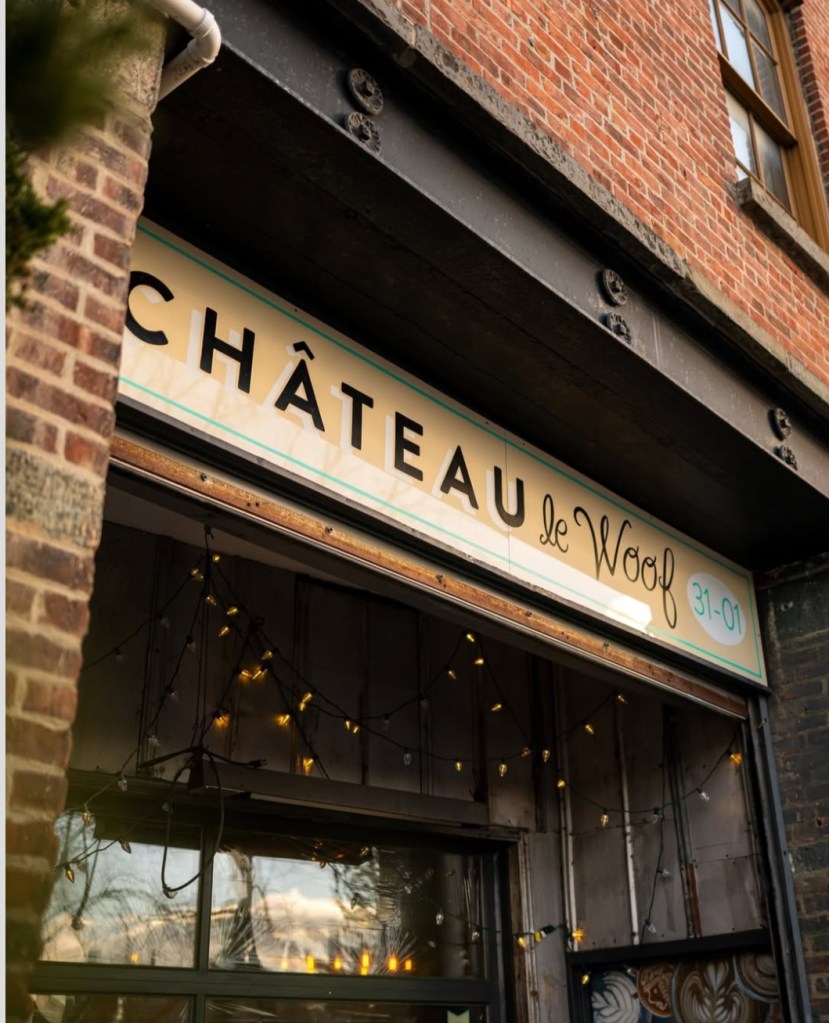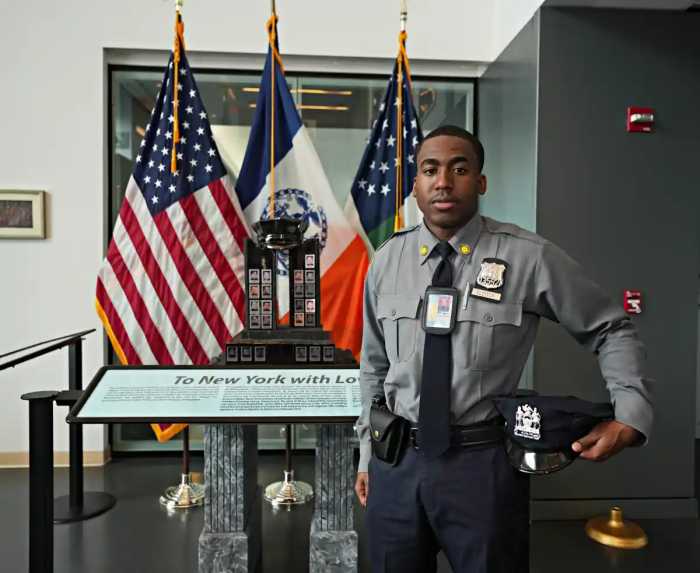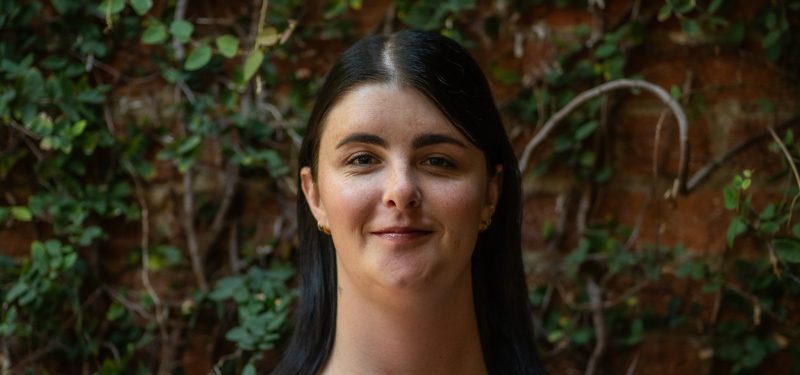By Kathianne Boniello and Adam Kramer
The campus of the Creedmoor Psychiatric Center could provide the answer to some of the borough's need for available real estate as politicians and government agencies eye the choice land that is up for sale in northeast Queens.
Under Gov. George Pataki's administration, the state has put an 8.5-acre site on the campus near Winchester Boulevard on the sales block. A 10.3-acre parcel proposed for new schools is still being negotiated between the city Board of Education and the sale of the Creedmoor ballfields to St. John's University for $1.1 million is on hold.
Another 22-acre portion of the sprawling site that stretches from Queens Village into Glen Oaks may be for sale in the future. Senior housing has been mentioned frequently as a possible use for some of the Creedmoor land.
The 350-acre Creedmoor property consists of 75 buildings used to house a wide variety of city and state agencies. The state psychiatric hospital is concentrated in Building No. 40, the largest structure on the campus, and uses five other buildings to house a chapel, its administration and a museum.
Creedmoor, once one of the largest mental hospitals in the state, has watched its patient population shrink as drug treatment for psychiatric disorders improved and set the stage for patients to move to community-based facilities in a nationwide trend.
While most politicians, civic leaders and community members from northeast Queens back the proposal to build three much-needed public schools on Creedmoor, there is strong disagreement on how the plan should be carried out.
The proposed school construction has caused an uproar among community residents who are worried that the schools will aggravate traffic problems, jeopardize children's safety and create jurisdictional disputes over the schools.
One educational leader in School District 26, where Creedmoor is located, is dissatisfied with the city Board of Education's proposal for an elementary school, an intermediate school and a high school.
The idea to use Creedmoor for new schools was initiated in 1998 by state Sen. Frank Padavan (R-Bellerose) and Borough President Claire Shulman
“There should be a long-term vision,” School Board 26 President Sharon Maurer said, “a unified vision for that entire property.”
Creedmoor is one of the largest tracts of land available for development in Queens along with Ft. Totten in Bayside, which has been designated city parkland, and the College Point Industrial Park, which has exploded with retail mega-stores like Toys 'R' Us and Target in recent years.
It's hard to imagine what Gov. Hugh Carey's vision for the Creedmoor property was in the late 1970s when his administration tried to convert the land for other uses, such as new prisons.
The first conversion on the Creedmoor campus took place in 1974 when Padavan introduced legislation in the state Senate that allowed Lifeline Center for Child Development, a non-profit day treatment center and special education school for seriously disturbed children, to use a building on the campus. Since then Padavan has spearheaded numerous bills to convert Creedmoor's buildings into spaces for the elderly, homeless mentally ill and others.
At this time there are about 25 city and nonprofit community agencies housed in former Creedmoor buildings.
Pataki is the first governor to try to privatize Creedmoor by selling off eight acres to the highest bidder as well as making land available for public schools in Queens.
The decision to put part of the Creedmoor campus up for sale reflects a shift in the state's philosophies about the mentally ill over the past 35 years.
State mental institutions around New York have been closed and many are for sale as the move to community care, such as group homes, has led to a significant decrease in the inpatient population. At Creedmoor the number of patients has plummeted to 475 today from a high of nearly 6,000 in the 1940s.
An official at the Empire State Development Corp., the agency overseeing the sale of the Creedmoor property, said “there is a surplus of land at all mental health facilities throughout the state that can be put to a more economical use.”
He said if more community-based mental health facilities are built in the future, there would be more land sales, but this will depend on the evolving needs of the mental health system.
Last year a master plan for the development of the Creedmoor site was drawn up by the borough president's working group, which consisted of local elected officials, civic leaders, the Empire Development Corporation, the Board of Ed and the Queens Office of the Department of City Planning.
“The master plan was a plan for how to reuse parts of Creedmoor that were surplus or determined to be surplus in the near or long-time future,” said Corey Bearak, executive vice president of the Queens Civic Congress.
He said the plan has been submitted to the governor and any development of the site is subject to the existing zoning laws.
For example, the original plan for St. John's to buy the Creedmoor ballfields for its baseball team would have retained the property's existing use and remained true to the area's zoning laws. But now the fate of the Creedmoor fields is in limbo because the New York Mets have shown interest in redeveloping the Jamaica campus ballfields on Utopia Parkway for their farm team, which would give the university's own team a first-rate place to play.
The first round of sales is only the newest chapter in Creedmoor's long history.
Long before the conversions of the past 25 years, the state psychiatric hospital was started in the late 1890s and served as an extension, or “farm colony,” for the Brooklyn Psychiatric Center, which is now Kings Borough Hospital, said Karen Schechter, spokeswoman for Creedmoor Psychiatric Center.
Schechter said when the hospital opened, it used the existing structures on the property – former National Rifle Association barracks – until it started building new facilities in the late 1920s. Creedmoor became a separate state mental hospital on July 1, 1935 after most of the construction was completed, she said.
According to the “Encyclopedia of New York,” the hospital had a capacity of 3,300 patients, but by 1940 there were more than 6,000 patients. The problems of overcrowding were heightened by a lack of funds and staff shortages.
“What would happen is that people would be hospitalized for their life or most of their life,” said Schechter. “In the '50s there was a change in treatments and philosophy of how people should be treated for psychiatric illness.”
Schechter said different agencies have been moving into Creedmoor for the past 25 to 30 years. Some of the organizations using the site are: The Catholic Charities Rose House, Lifeline, SNAP, the New York Police Department, a day-care center, the city Board of Education, Mental Health Legal Services and a Department of Sanitation salt dome.
Now that some of the campus, surrounded by Hillside Avenue, Winchester Boulevard, the Grand Central Parkway, Commonwealth Boulevard and the Cross Island Parkway, is up for sale, more agencies are seeking a piece of it for themselves.
The master plan Shulman submitted to the state “recommends that future redevelopment be appropriate in scale, density and character with the surrounding neighborhood,” she said in her 2000 State of the Borough report.
A spokesman for Padavan, who has been instrumental in providing groups with space on the campus, said the senator views Creedmoor as a community asset that should be used to meet community needs. Spokesman Ed DeCosmo said Padavan's overriding concern was that the use of the property be consistent with the campus and the neighborhood.
Both Shulman and Padavan have pushed for building public schools on the campus, and the School Construction Authority is in the midst of holding public hearings on the proposal, which includes a 650-seat elementary school for School District 26, a 900-seat intermediate school for School District 29 and a 1,000-seat high school.
Some community leaders have also suggested placing facilities for senior citizens, such as assisted living quarters, on the land.
Bernice Siegal, a counsel for City Councilman Sheldon Leffler (D-Hollis) who lives in Glen Oaks and is a candidate for Leffler's seat in 2001, was supportive of the idea of using the Creedmoor land for senior housing.
“I'm hopeful that it would go for housing,” she said. “Senior housing in lieu of housing for the general public.”
Rory Lancman, a candidate for Padavan's state senate seat and a resident of Kew Garden Hills, said “there is a tremendous need for senior housing.”
Lancman was quick to point out that any facility built on the Creedmoor property should not be “monolithic as long as it's not a big institution.”
Senior housing would be good, he said, if it fits “the context of the community.”
Siegal was also intent on using the property for schools.
“What else can you put there that makes sense?” she said.
The SCA has said it will be able to incorporate the rehabilitation building, which Creedmoor used to teach life skills, computer training and staff education, into the school construction plan because it is an existing structure with classrooms, a gymnasium and auditorium.
Padavan, who had originally proposed putting schools on the Creedmoor property in August 1998, said “there's a tremendous need for schools.”
Richard Hynes, president of the Bellerose Hillside Civic Association, said his group was so supportive of having schools at Creedmoor that they would be willing to move an elementary school proposed for the campus of Queens College on the property.
“We'll take that any day,” he said of the proposed elementary school.
Hynes said “we're really open to anything as long as it's good for the neighborhood and for the city.”































